Barrenwort Epimedium platypetalum

ABOUT
Epimedium platypetalum, commonly known as barrenwort, is a perennial with a distinctive appearance. It features a beautiful array of heart-shaped leaves that often have a spiny texture. The foliage might exhibit an array of colors throughout the seasons, starting with a reddish-bronze shade in spring, transforming into green as the seasons progress, and often turning to a fetching red or bronze in the autumn, providing year-round visual interest. The barrenwort produces dainty flowers which have a charming, fairy-like quality. These blooms typically appear on slender, arching stems and have an intriguing form with outer sepals falling away to reveal the inner petals that are spurred, resembling the wings of a bird in flight. The flowers come in a range of colors, generally in pastel hues, and can include shades of pink, white, yellow, and lavender. The barrenwort is not only recognized for its ornamental qualities but also for its resilience. It has a robust nature, allowing it to thrive in a variety of conditions once established. The plant prefers shady spots, which makes it ideal for woodland gardens or areas under the canopy of larger plants or trees. It's also well-known for its tolerance to dry shade, making it a valuable addition to challenging spots in the landscape where many other decorative plants might struggle to survive.
About this plant
 Names
NamesFamily
Berberidaceae
Synonyms
Bishop's Hat, Fairy Wings, Horny Goat Weed
Common names
Epimedium platypetalum.
 Toxicity
ToxicityTo humans
Epimedium, commonly known as barrenwort, has not widely been reported as a toxic plant to humans. In traditional use, various species of Epimedium have been used in herbal medicine, particularly in Chinese medicine, without significant toxic effects when used appropriately. However, as with any plant or herbal substance, individual allergic reactions or sensitivities are possible. Ingesting any plant inappropriately or in large quantities could potentially result in adverse effects. If unusual symptoms are observed following ingestion, medical advice should be sought.
To pets
Barrenwort is not commonly listed as a toxic plant to pets such as dogs and cats. While it is generally considered to have low toxicity, pets may sometimes have individual sensitivities or allergic reactions. If a pet ingests a significant quantity of barrenwort and displays symptoms of distress such as vomiting or diarrhea, it is advisable to consult a veterinarian. However, no widespread toxicity issues related to Epimedium platypetalum are known in pets.
 Characteristics
CharacteristicsLife cycle
Perennials
Foliage type
Deciduous
Color of leaves
Green
Flower color
Yellow
Height
1 feet 12 inches [30-40 cm]
Spread
1 feet 12 inches [30-40 cm]
Plant type
Herb
Hardiness zones
5
Native area
China
Benefits
 General Benefits
General Benefits- Ground Cover: Epimedium platypetalum, commonly known as barrenwort, is often used as a ground cover plant due to its spreading habit and decorative foliage.
- Drought Tolerance: Once established, barrenwort has good drought tolerance, making it suitable for xeriscaping or low-water gardens.
- Shade Tolerance: Barrenwort thrives in shady conditions, making it ideal for planting under trees or in other areas where many plants struggle to grow.
- Low Maintenance: This plant requires minimal care once established, reducing the need for frequent watering, fertilizing, or pruning.
- Erosion Control: With its dense growth habit, Epimedium platypetalum can help prevent soil erosion in sloped areas and garden beds.
- Attracts Pollinators: The flowers of barrenwort attract bees and other pollinators, supporting biodiversity in the garden.
- Aesthetic Appeal: Barrenwort produces attractive foliage and delicate flowers that can add visual interest to the landscape throughout the seasons.
- Deer and Rabbit Resistant: This plant is known to be resistant to browsing by deer and rabbits, which can be beneficial in gardens plagued by these animals.
 Medical Properties
Medical Properties- Libido Enhancement: Traditionally used in Chinese medicine, Epimedium platypetalum, commonly known as horny goat weed, is reputed to improve sexual function and boost libido.
- Erectile Dysfunction: The plant is thought to have properties that help with erectile dysfunction by increasing blood flow to the genital area.
- Osteoporosis: Some compounds in the plant, such as icariin, have been investigated for potential effects on bone health and prevention of osteoporosis.
- Menopausal Symptoms: Epimedium is occasionally used to alleviate menopausal symptoms by acting as a phytoestrogen, although its efficacy for this purpose is not well-documented.
- Anti-Inflammatory: The plant contains various flavonoids with potential anti-inflammatory effects.
- Immunomodulatory Effects: There are some indications that Epimedium may influence immune system function, but this area requires more research.
- Cardiovascular Health: Epimedium might have benefits for cardiovascular health, particularly in terms of improving circulation and heart function.
- Antioxidant Properties: The various flavonoids and other compounds in the plant may provide antioxidant benefits, helping to protect cells against damage from free radicals.
 Air-purifying Qualities
Air-purifying QualitiesThis plant is not specifically known for air purifying qualities.
 Other Uses
Other Uses- Epimedium platypetalum, commonly known as bishop's hat, can be used as a groundcover in shaded garden areas due to its spreading habit and attractive foliage.
- Bishop's hat is sometimes used in floral arrangements for its airy and delicate-looking flowers that add a unique texture.
- Because of its ornamental leaves, which change color throughout the seasons, bishop's hat can be used in a shade garden to provide visual interest year-round.
- The plant is suitable for underplanting deciduous trees, as it can thrive with the seasonal variations in light.
- Bishop's hat's drought resistance once established makes it an appropriate choice for xeriscaping in cooler, shaded environments.
- The leaves of the bishop's hat can be used as a natural mulch, slowly decomposing and enriching the soil with organic matter.
- In larger landscapes or woodland gardens, this plant can help with soil erosion control due to its mat-forming growth.
- Gardeners may use bishop's hat for edge definition in informal path settings due to its low height and spreading nature.
- Bishop's hat can be included in a sensory garden for its interesting leaf textures, which add a tactile element to the experience.
- The contrast between the dark foliage and brighter flowers of bishop's hat can be used to create visual depth in garden design, especially in shaded areas.
Interesting Facts
 Feng Shui
Feng ShuiEpimedium, commonly known as Horny Goat Weed, is not used in Feng Shui practice.
 Zodiac Sign Compitability
Zodiac Sign CompitabilityHorny Goat Weed is not used in astrology practice.
 Plant Symbolism
Plant Symbolism- Longevity: Epimedium, commonly referred to as "Horny Goat Weed," is often associated with longevity due to its traditional use in herbal medicine as a tonic for health and vitality.
- Sexual Vitality: Given its nickname "Horny Goat Weed," Epimedium is symbolically linked to sexuality and libido, purportedly improving sexual function and desire.
- Improved Circulation: As the plant is used in traditional medicine to enhance blood flow, it symbolizes improved circulation and the promotion of good health.
- Adaptability: Epimedium is a hardy plant that can thrive in challenging conditions, representing the ability to adapt and survive in various environments.
 Water
WaterBishop's Hat, commonly known as Epimedium platypetalum, should be watered once every week to ten days, ensuring consistent moisture. During the growing season in spring and early summer, increase watering to support its development, providing about one gallon per watering session for an average-sized plant. During the hot spells, you may need to water twice a week, and always check the top inch of the soil beforehand; if it's dry, it's time to water. In the autumn and winter months, reduce the amount as the plant requires less moisture. It's crucial to avoid overwatering, as this can lead to root rot.
 Light
LightBishop's Hat thrives best in partial shade to full shade conditions. It should be planted in a spot that receives dappled sunlight or light shade, avoiding direct afternoon sun, which can scorch the delicate leaves. An ideal location would be under a canopy of tall trees or on the north side of a building where it receives indirect light.
 Temperature
TemperatureBishop's Hat prefers temperature conditions ranging from 50°F to 75°F for optimal growth. It can withstand temperatures down to 5°F in winter and can survive in temperatures up to 80°F during the summer. Ensure protective measures if the temperature is expected to exceed these limits, as extreme temperatures can stress the plant.
 Pruning
PruningBishop's Hat should be pruned to remove any dead or damaged foliage and to maintain its shape. The best time for pruning is in late winter or early spring before new growth begins. Pruning can be done annually, as the plant is quite tolerant of being cut back. Regular pruning also encourages healthier, more vigorous growth.
 Cleaning
CleaningAs needed
 Soil
SoilBishop's Hat prefers well-draining soil rich in organic matter. A mix consisting of garden soil, compost, and perlite is ideal, creating an airy medium that retains moisture without becoming waterlogged. The soil pH should be slightly acidic to neutral, ranging from 6.0 to 7.0, to encourage healthy growth.
 Repotting
RepottingBishop's Hat should be repotted every two to three years or when it becomes root-bound. Spring is the best time for repotting, as the plant is entering a period of active growth and can recover more quickly from the disturbance.
 Humidity & Misting
Humidity & MistingBishop's Hat thrives in moderate to high humidity levels, typical of its natural woodland habitat. Aim to maintain humidity around 50-60% for optimal growth. However, it can tolerate lower humidity levels without significant harm.
 Suitable locations
Suitable locationsIndoor
Place Bishop's Hat in bright, indirect light with moist soil.
Outdoor
Grow Bishop's Hat in shade to partial sun with moist soil.
Hardiness zone
5-9 USDA
 Life cycle
Life cycleEpimedium platypetalum, commonly known as barrenwort, begins its life as a seed which germinates in moist, well-drained soil, usually in the shade of a woodland setting. After sprouting, the seedling establishes a small rosette of heart-shaped leaves, which are semi-evergreen depending on the climate. As it matures into a flowering plant, it develops a rhizomatous root system which allows it to spread and form clumps. During springtime, barrenwort produces delicate, spurred flowers that range in color, attracting pollinators to assist in reproduction. After pollination, the flowers develop into dry, capsule-like fruits containing seeds that are dispersed by gravity or animals. The plant then enters a period of dormancy in colder climates during the winter months, conserving energy to complete its annual life cycle when it regrows the following spring.
 Propogation
PropogationPropogation time
Spring to summer
The most popular method of propagation for Epimedium platypetalum, commonly known as barrenwort, is through division. This process is best carried out in the spring, just before new growth begins. To divide barrenwort, carefully dig up an established clump and gently separate the rhizomes, ensuring that each section has at least a couple of buds. Replant these divisions immediately, spacing them about 8 to 12 inches (20 to 30 centimeters) apart to allow sufficient room for growth. Water the newly planted divisions thoroughly to help establish them. This method allows gardeners to quickly and effectively increase their population of barrenwort while maintaining the health and vigor of their plants.
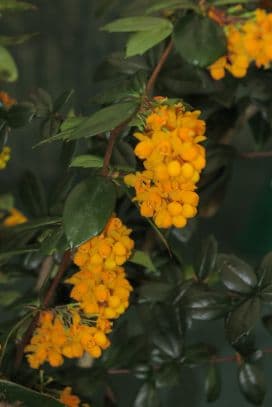
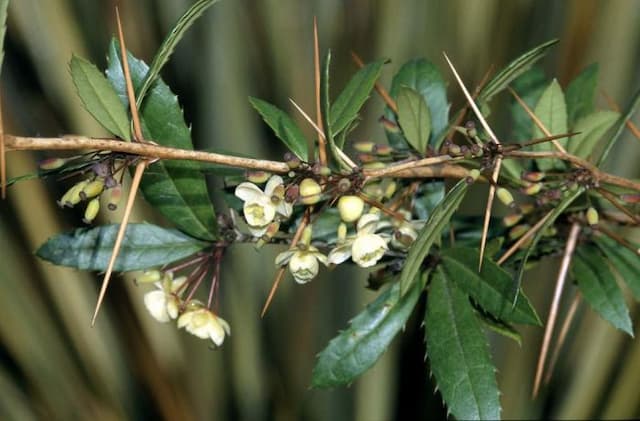
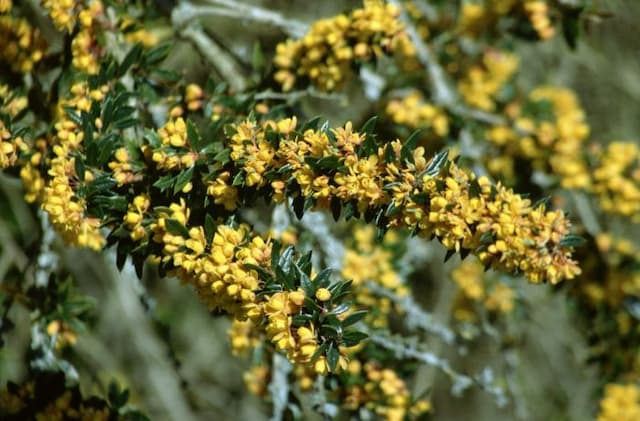
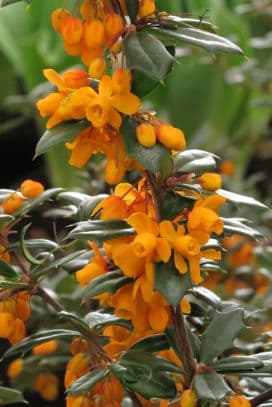
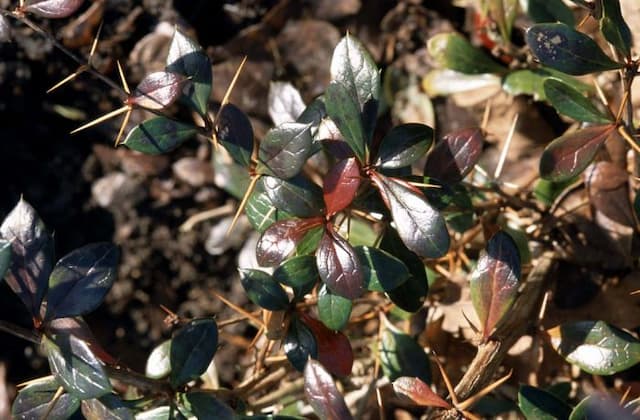


![Japanese barberry [Bonanza Gold]](/_next/image?url=https%3A%2F%2Fplants-admin.emdemapps.com%2Fimages%2Fplants%2F%2Fimages%2F604b5385e413f.png&w=640&q=75)

